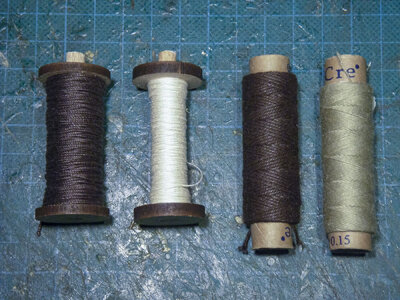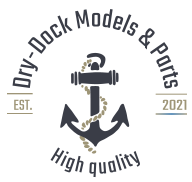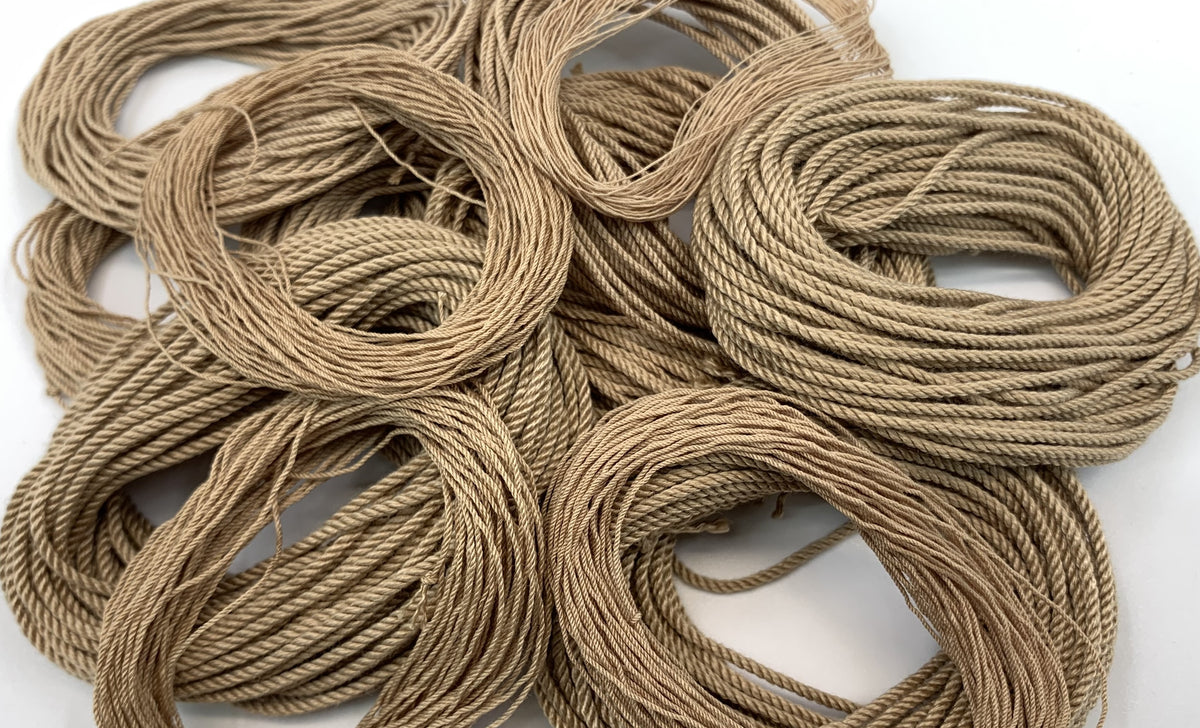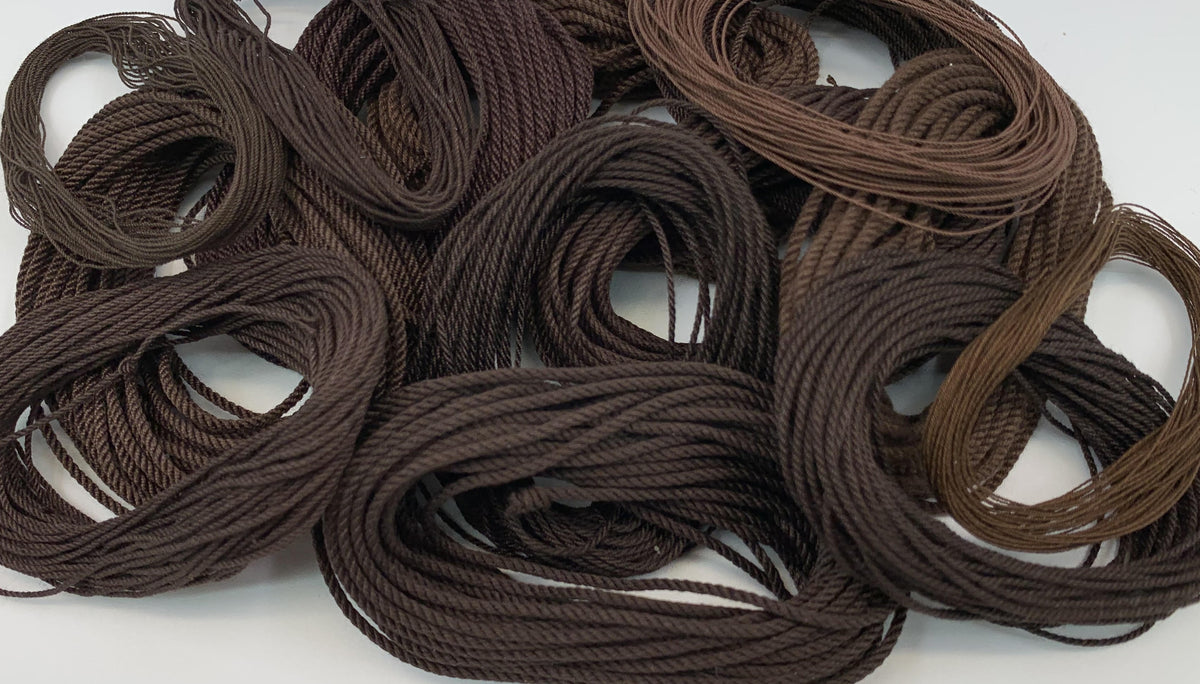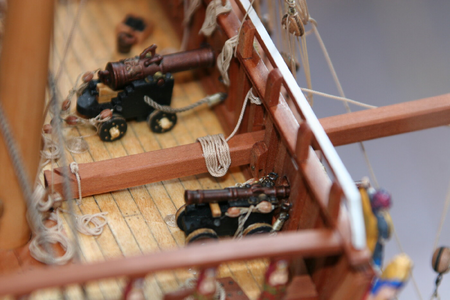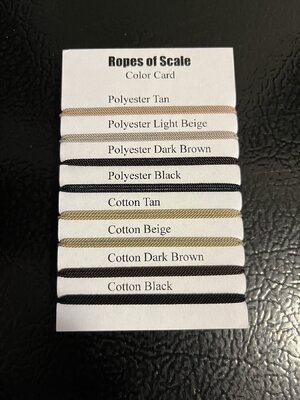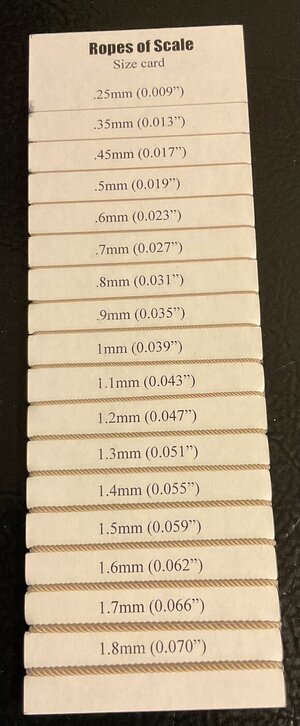Begroetingen Hatteras,
I'll weigh in here as well if I might. The challenge you face is that you have noticed the difference between scale rope and thread, and you don't think you can ignore the difference. This puts you in a potentially difficult spot. It's sort of like drinking wine...you're pretty happy with what's in the 1-liter bottle until you get a taste of cru-class burgundy and suddenly you realize there is a difference. But now: what to drink?
To answer your above question directly: I am not aware of any budget after-market rope. The materials aren't expensive, and the tool(s) needed to make the ropes need not be expensive, but the learning curve is steep, and it takes SO MUCH TIME to make the needed supply of rope (especially on the size of ship you are contemplating). Being fully aware of this aspect, the after-market suppliers upcharge for their work.
But in my mind the cost is justified. I spent about a year on the rigging of the Vasa. At some point along the way the hours and hours (and hours and hours) I was spending making ropes began to make me frustrated (that is, what started out as a most enjoyable and satisfying experience turned into drudgery).
But let's say I could have purchased all the rope I needed for $400 (just a guess). Spread that over a year and the cost dissipates into the background.
Of course, money is real, and if you are on a shoe-string budget then the tension you feel is not easily resolved. Only you know yourself...would you enjoy the prospect of hand-making all your ropes? Problem solved. Does your hobby-budget establish thresholds? Again, problem solved (albeit with a level of dissatisfaction). Does the quality of the final outcome trump all other measures? Then you also know what you have to do (make or buy).
Speaking for myself, in the future I plan on celebrating that there are suppliers out there that make some amazing ropes. I'll just make it my Christmas present / birthday present / odd job income spend for one year of my life and consider it money well-spent.
I feel your pain my friend!
Thank you for your emphatic analysis
@dockattner !
I think your estimate of $400 is not far of. Indeed I am on a tight budget, but of course in the end it is all a matter of choice. So if I really wanted to I could actually choose to spend this kind of money without having to economize on essentials.
But that's not the whole story. The retail price of this kit is about €320 (I got it for €260), which I think is good value for money. However the materials used are of course not the best. No walnut and boxwood, but plywood and lime wood for example. Real ropes combined with plywood deck furniture, wouldn't that be like installing golden taps on a budget bathtub? It also would not be the end. The composite deadeyes and blocks would be next in line to be replaced. These don't come cheap either.
And then there is this. Building a wooden model ship takes a long time. So in the process one develops skills and increases knowledge. Halfway one regrets choices that are made or not made in the beginning of the build, in spite of ample preparation. For instance, at a certain point I decided to make some of the parts of an alternative, more suitable kind of wood than supplied with the kit, especially these parts that needed to be carved. But still the parts that I made before are of a lesser quality wood, and this shows. It is unfortunately too much of a hassle to replace these. On the other hand I did break away the original - superglued - decorations of the stern and replaced them with more convincing ones. This was quite a decision to make because of the risk of irreversible damage, but I'm very happy with the result now. The cost of these adaptations however was modest. The dilemma is, should't one at one point - within reasonable limits - accept things as they are and save any newly acquired insights for the next build? Particularly because some of the bad choices, either your own or the manufacturers, simply cannot be undone.
But of course with each next ship the whole thing starts all over again...
Finally one more thing to consider. I still have so much to learn. This is only my second ship, and I even lack any former experience in woodworking. Shouldn't I first develop my skills and only then start using fancy materials?
To conclude: I still think the Kolderstok rope/thread could be a nice compromise.
PS: Your Vasa looks magnificent. I remember it attracting my attention on this forum before.
